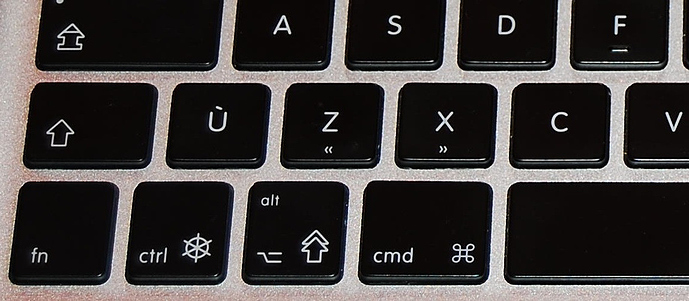Well, that these symbols take up less space than text is slightly obvious and doesn’t really need stating. LOL.
The more important point is whether these particular symbols serve the intended purpose. And for that it is important that you don’t let your own personal experience color the decision. When you (personally) look down at your own Mac keyboard you probably see almost all of these symbols on the keys.
However, when I look down at my own keyboard (Logitech G710+) I see none of them, besides “Return” and the directional arrows. This is typical for almost all non-mac keyboards.
So a large majority of Blender users have never seen the mac-specific ⌘ symbol and would never guess in a million years that it might indicate to press the “Windows” key.
Similarly, no non-mac user would ever see ⌥ because it is not a symbol for alt, but is a symbol for the Mac “Option” key. On your keyboard it is labelled with “Option” and has alternate text of “alt” in small letters because that key can behave as alt for non-mac programs. But the standard symbol for alt is ⎇. But, as mentioned neither symbol is ever shown on any non-mac keyboard.
Using caret ^ for control is problematic because most people, seeing this alone, would assume it to be shift. There hasn’t really been much association between caret and control except in control script documentation from the 70s-90s. Following is an image of a Mac keyboard using the helm symbol (U+2388) ⎈ for control. Note that some PC keyboards have also used helm, while some others have used “open center asterisk” (U+2732) ✲. But again, most PC keyboards show no symbol at all.
How are users supposed to use the symbols shown on the footer to indicate what keys to press? Are you expecting them to know how the mac symbols relate to a non-mac keyboard? Are we also going to add a legend that says “⌥ = Alt” somewhere?
